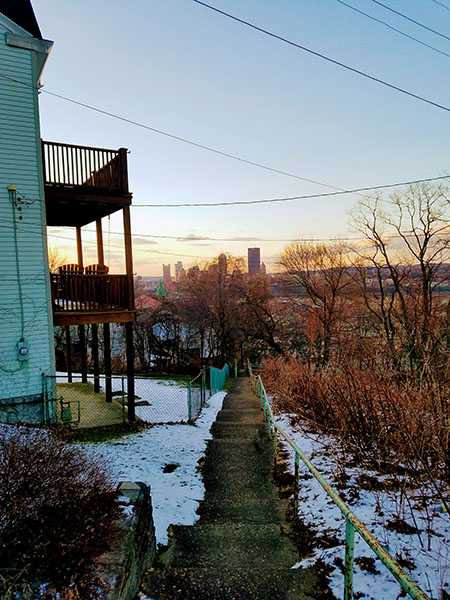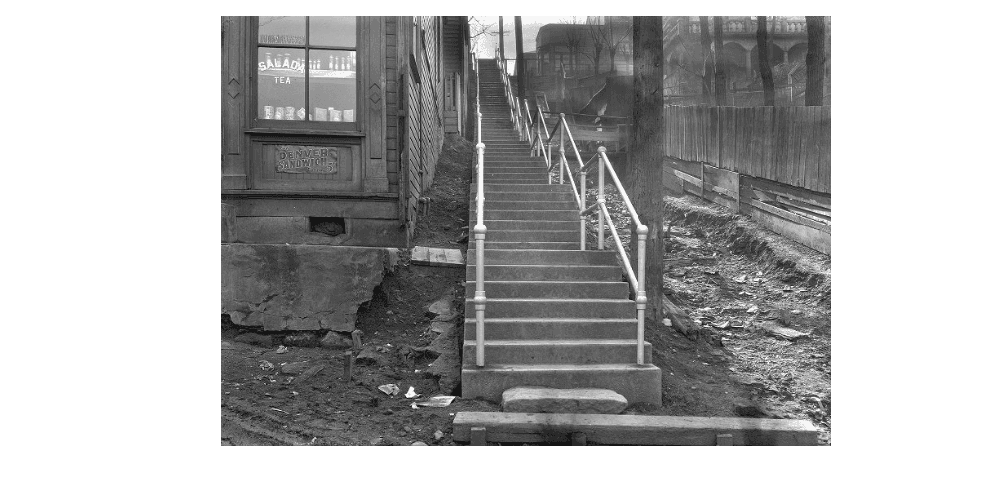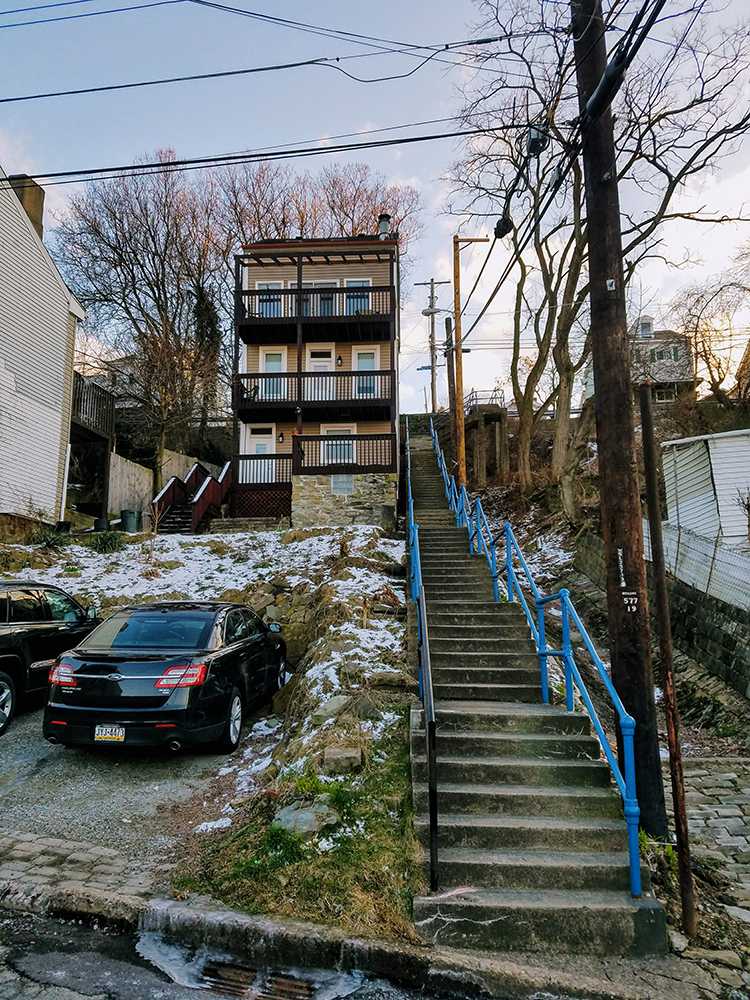Secret Pittsburgh
The Immortal Steps and Their Curators
By Calvin Salazar
“Pittsburgh is the cockeyedest city in the United States…Physically it is absolutely irrational. It must have been laid out by a mountain goat.” Columnist Ernie Pyle had a reputation for honesty in his reporting, so when he came across the city of Pittsburgh during his travels around the country in the late 1930s, he called it as he saw it. Locals are certainly challenged by the city’s tricky topography which features abrupt elevation changes and a network of rivers. The obvious structural aides that come to mind when considering navigating these obstacles are Pittsburgh’s many bridges. While these iconic bridges will get you across the three rivers, there still lies the problem of trekking the steep and abundant hills. Fortunately, and less known to many, the city contains 739 public stairways to traverse the hilly areas (Regan, 12)
Of these stairways, 68 of them can be found and climbed in the South Side neighborhood, specifically the South Side Slopes. The creation of these staircases was brought about as a means of transportation for the workers of the steel mills in the Flats (the neighborhood at the bottom of the slopes, off the river) and they have been playfully deemed Pittsburgh’s first public transportation system. As many mill workers lived in the Slopes, a 12-hour shift might be followed by a long, tiring hike up the steps to return home. Figures 1 and 2 show a comparison of a set of steps in two photographs taken about 85 years apart. On my first visit to the steps in the Slopes, I tried to keep this context of their original purpose in mind. However, with it being a rare sunny, spring day, and given that I was not returning home from an exhausting work shift, it was hard for me to sustain a connection to that lifestyle and not simply bask in the spectacular panorama of the city coming into view.
I was struck by the idea that, while I was having a great time and may have found my new favorite spot in the city, that same set of steps could have been a dreadful part of each day for someone working in the flats; a daily challenge undergone by tired, dirty, men, knowing that exactly 285 steps separated them from a family, a meal, and a bed. This is something I simply do not have a concept of, and I believe that that disconnect coincides with the ever-changing purpose of the steps. Their once practical nature, that is, simply to get up and down, has blossomed into so much more. While today these steps do still supply residents with transport to, from, and through the slopes, they are also commonly frequented by runners, sight-seers, gardeners, artists and photographers. What has made this transformation possible is the South Side Slopes community, who, in the wake of the mills shutting down, have vowed to revitalize the beauty and significance of their neighborhood. The network of the 68 stairways has been the forefront of their mission and enough support has been provided to restore, maintain and continually promote the steps year after year.
The wonderful thing about these staircases is their subjectivity. How they are experienced differs with each visitor, for each staircase, every time they return. For me, the steps can be a training ground; I like to try and run all the way up the Oakley Way steps to Mission Street. But at times they are also a space where I can relax, think, or listen to music as I take my time traversing the Slopes. Figure 3 shows one of my favorite sets of steps that cuts through residential yards and offers a unique view of Downtown. I prefer the walk down the Yard Way steps compared to the climb up, however, most probably feel that way about those 317 steps. I’ve enjoyed showing people the steps, seeing their reactions and sharing mine. They are truly a wonder for the level of thought and emotion they provoke. While everyone might have a different perspective regarding these steps, their interactive quality has come a long way from their past.
When examining more generally how the relationship between the steps and their users has changed, I can’t help but notice a theme of reciprocation. In the days of the mills, the steps provided a service essential to the working life. While they may have been a burden or dread for some, there is no doubt that they were necessary and probably appreciated to a degree. Today, the newfound, community wide interest in the restoration and maintenance of these steps serves as repayment; it is a thank you to the steps that carried hard working men home each day. Now, the caretaking has come full circle with the community’s beautification and repurposing of the stairways, which are boasted by the locals and enjoyed by many more. The annual StepTrek, hosted by the South Side Slopes Neighborhood Association, brings together Pittsburghers from all over to take part in a mapped out walk (or run) up and down a selection of staircases in the Slopes. Trekkers are exposed to the history of the neighborhood and the development of pride among the community, all accompanied by breathtaking views.
There exists a codependent relationship between the steps and the community that surrounds them. The people rely on these staircases, for transit as well as the abundance of activities they provide. The steps obviously need continual maintenance, which is made possible by the neighborhood’s persistence and pride. This collective appreciation has allowed the steps to stand the test of time and I am confident that they will stick around much longer, as future generations of step curators continue the process of maintaining each staircase for the benefit of Pittsburgh.


